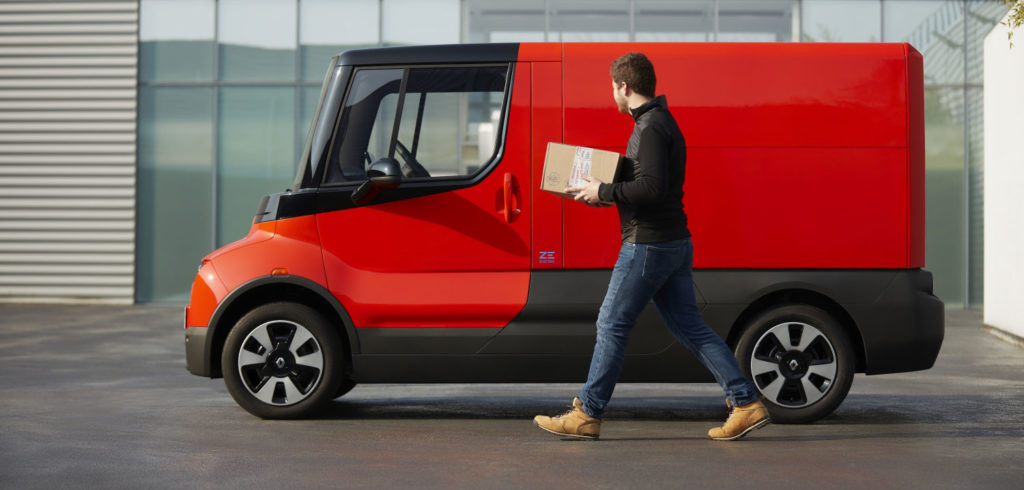Renault has launched the EZ-FLEX, an experimental electric and connected light commercial vehicle (LCV) that was created and designed for sustainable mobility and delivery efficiency in urban areas.
The EZ-FLEX will be lent to various delivery professionals in Europe to collect all relevant data usage to better understand the needs associated with daily delivery in urban areas.
The volume of transported goods in the world is expected to quadruple by 2050. In this context, at the end of 2018, Renault presented its vision of the future of urban delivery in 2030 with the electric, autonomous and connected Renault EZ-PRO concept car. With EZ-FLEX, an electric and connected vehicle, Renault is exploring new methods of last-mile delivery.
The EZ-FLEX is a compact and maneuverable vehicle designed to move seamlessly throughout cities. It provides an optimal footprint in relation to its load space: the length (3.86m/12.66ft), width (1.65m/5.41ft) and height (1.88m/6.16ft) are small enough to enable access to parking garages. Its 3m³ (105ft³) load capacity is exceptional for its size and made possible by a compact cockpit that still offers the full range of assets of a true LCV. The 4.5m (14.7ft) turning radius provides excellent maneuverability, according to Renault.
Rear loading is optimized via an ergonomic loading height (760mm [30 in] above ground) and opening enabling easy access to the entire loading bay. The vehicle was also designed to enable a wide variety of configurations for the cargo bay. These rear space configurations are adaptable, designed to meet the different needs of users.
As an electric vehicle, EZ-FLEX can access city centers, offering a range of 100km (62 miles) adapted to the needs of urban delivery.
A dozen Renault EZ-FLEX vehicles will be lent to various professionals, companies, cities and municipalities in Europe. The experiment is expected to last about two years.
The vehicle is equipped with sensors to better understand its use. The users will further enrich this data with their feedback during the experiment. Different data types will be collected including but not limited to: geo-location, mileage, range, use of cargo opening, speed, stops, etc. This data will then be transferred via the vehicle’s connected system, either in real time or once per day, to understand the reality of daily use.
The analysis of the data, twinned with the users’ feedback, will enable Renault to design vehicles that are better adapted to the evolution of urban logistics.


